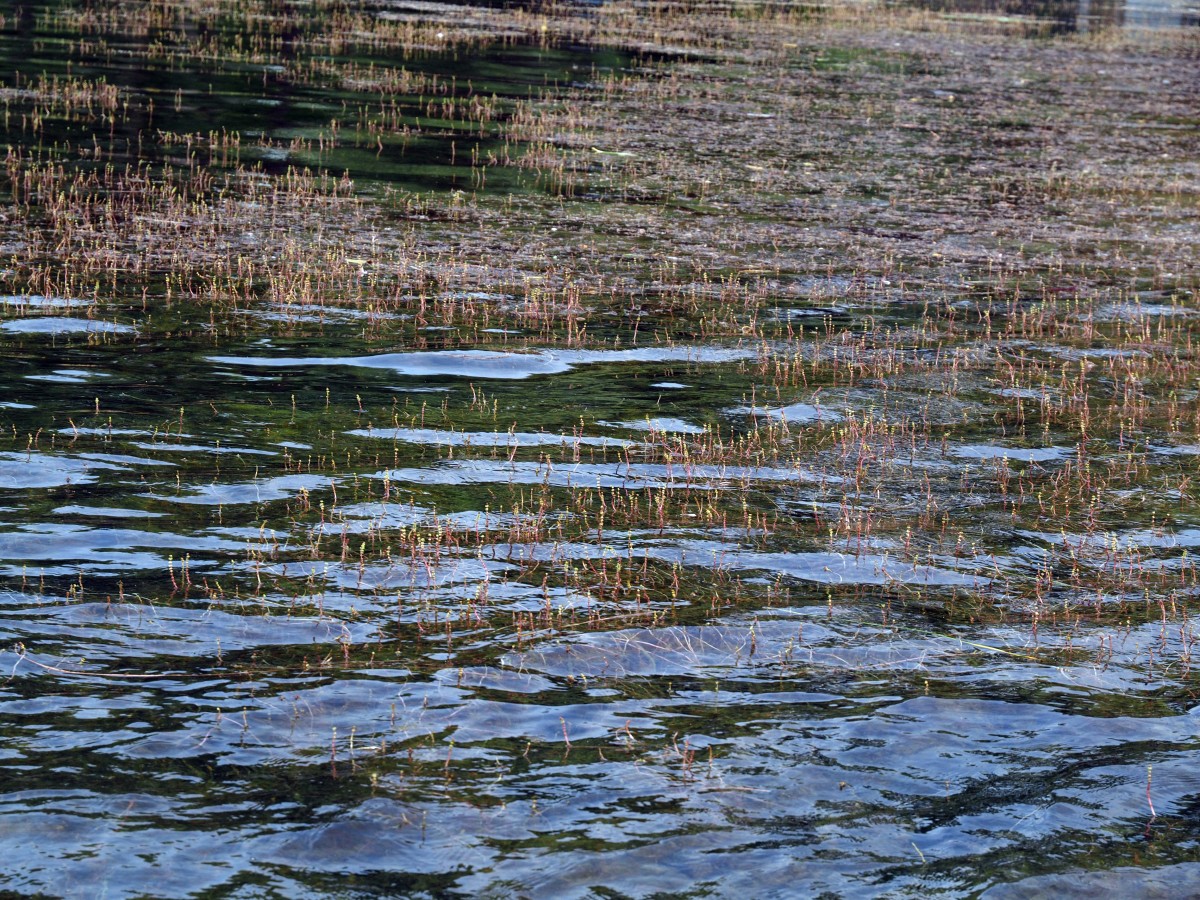DNA evidence has confirmed that an invasive weed has found its way to Clark Lake. Eurasian Milfoil has combined with a weed native to Clark Lake to form a hybrid. A thorough investigation reveals the immensity of the threat. One leaf of this plant or its hybrid can propagate over 250-million new plants, and do it quickly. Lakes that have faced this same invasion have found that it doesn’t take long for this weed to take over—within a year or two. This weed targets areas less than 15-feet in depth and tops out at or near the surface making navigation and other use of the lake impossible. Imagine the areas less than 15-feet deep, tangled with this invader. You would only be guaranteed clear sailing over the trench formed by the ice-age glacier that runs from one end to the other.
Presence of the invasive weed has been confirmed in three locations at Clark Lake. But it is by no means limited to those areas. A visual inspection of other areas tells the story that there is far more of this infestation in the lake right now than previously realized. Yet, there are two pieces of good news. Compared to some other lakes, this infestation has been detected early. Secondly, Clark Lake is not the first to experience this problem. Many lakes around the country and most of those nearby have had to deal with this problem. As residents, we are not forced to reinvent the wheel. We can learn from the experiences of other lakes in our area—what works and what doesn’t work. That information is available. Many hours of research on my part and others have been directed at assembling this knowledge to form a guide to effective solutions.
It is important to face two uncomfortable facts. The infestation is here to stay and will quickly become worse if we do nothing. Do nothing and our advantage of early detection is squandered. Secondly, there is no perfect solution. Each approach has one or more drawbacks.
In working towards a recommendation, the process has been to eliminate approaches that have a limited chance of achieving results or that create unintended ecological damage. A detailed discussion of these approaches, their pros and con, can be viewed by clicking here. Flaws in the following solutions are serious enough to eliminate them from recommendation: harvesting (each clipping is capable of creating 250-million more plants per year), weevils (they eat the milfoil but with mixed success and will no longer be available), bubblers (costly and not suitable for lakes that are both shallow and deep), and benthic barriers (logistically intensive, create navigational hazards, have ecological problems–and probably would not be approved by the DNR/DEQ for the large area needing treatment). That leaves one solution—herbicides. Properly chosen and managed herbicides have proven safe to humans, animals, fish and other wildlife. They target the invasive plant and its hybrid and not all plant life.
As this research project began, herbicides were at the bottom of the list. Who wants to use them if you don’t have to? And bringing them up as a solution is no way to win a popularity contest. But as often happens, the learning process causes one’s mind to open. That’s why herbicides are currently used in Lake Columbia, Wamplers Lake, Lake LeAnn, Michigan Center, Devils, Round and Vineyard Lakes. Our research shows no other solutions being used in Jackson, Lenawee or Hillsdale Counties. Discussions with the DNR/DEQ indicate that when herbicides are used properly by professionals, they are the correct method. In future articles, you will read about the paths other area lakes have followed. We can benefit by learning from their missteps and by understanding how they achieved their successes.
Experience at other lakes also shows that a minority will oppose herbicides. Individuals who feel this way should research solutions for themselves. They can access original documents by clicking here. Those who don’t wish to defend the lake in this manner should ask themselves, “what is the solution that is both effective and economically feasible?”
Our lake is at a turning point. And time is of the essence. We are all united in our love of Clark Lake. Most of us are here because we want to be and may have sacrificed to do so. Most importantly we need to keep our eyes on the prize: the health of our beautiful lake for our generation and generations to follow—without causing harm to anyone or anything except the invader.
-John Deming













